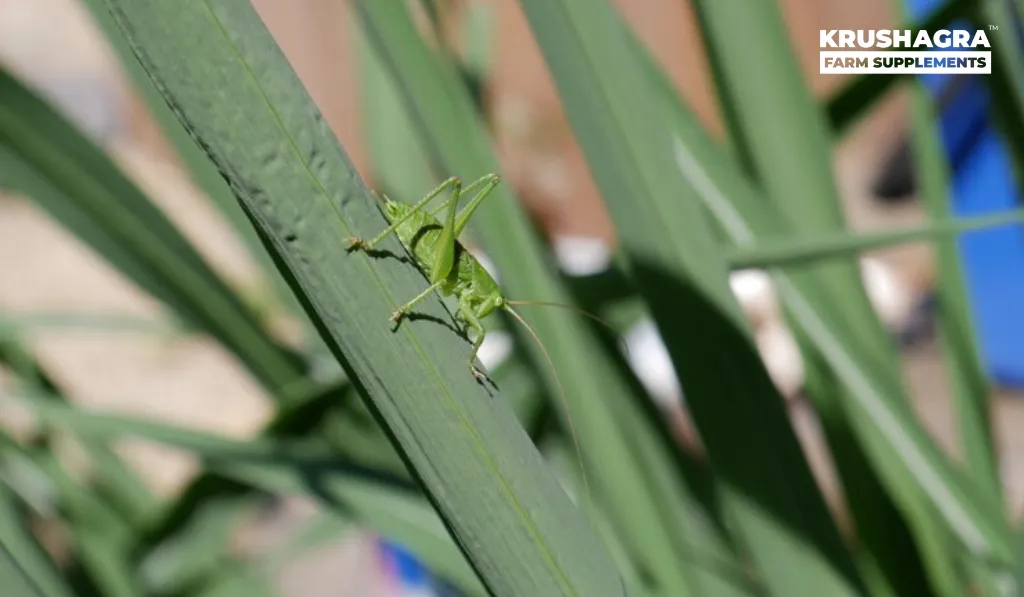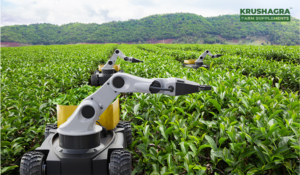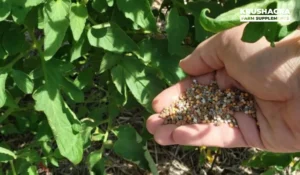Explore the advantages of utilizing biopesticides for managing aphids, thrips, and whiteflies in plantation crops. Learn how these environmentally friendly alternatives offer effective pest control while minimizing harm to beneficial organisms and promoting sustainable agriculture.
Introduction:
Biopesticides have emerged as a sustainable alternative to chemical pesticides in managing pest infestations in plantation crops. With growing concerns about environmental impact and food safety, biopesticides offer an eco-friendly solution that effectively targets pests like aphids, thrips, and whiteflies while minimizing harm to beneficial organisms and ecosystems. From understanding their modes of action to highlighting their efficacy in field trials, we delve into how biopesticides contribute to sustainable agriculture practices and promote the health and resilience of plantation ecosystems.
Understanding Pest Infestations in Plantation Crops
Pests like aphids, thrips, and whiteflies pose significant threats to plantation crops, causing damage to foliage, flowers, and fruits. Understanding their biology and behavior is crucial for developing effective pest management strategies.
Biology and Behavior of Aphids, Thrips, and Whiteflies
Aphids, thrips, and whiteflies are common pests in plantation crops, exhibiting distinct feeding habits and life cycles. Understanding their morphology, reproductive strategies, and host preferences is essential for implementing targeted control measures.
- Morphology and Life Cycle
Aphids, thrips, and whiteflies vary in size, color, and shape, with different species exhibiting unique characteristics. Their life cycles typically involve egg, nymph, and adult stages, with environmental factors influencing development and population dynamics. - Feeding Habits and Damage Symptoms
Pests like aphids feed on plant sap, causing wilting, distortion, and discoloration of leaves and stems. Thrips feed on plant tissues, leaving behind silvering, stippling, and necrotic lesions. Whiteflies damage plants through feeding and vectoring of plant viruses, leading to reduced growth and yield.
Impact of Pest Infestations on Plantation Crops
Pest infestations can have detrimental effects on plantation crops, resulting in yield losses, economic damage, and reduced crop quality. The cumulative impact of pest damage can threaten the sustainability and profitability of agricultural operations.
- Yield Losses and Economic Impact
Pest-infested plants exhibit reduced vigor, growth retardation, and yield decline, resulting in significant economic losses for farmers. Yield reductions directly impact farm income, market competitiveness, and supply chain stability. - Secondary Infections and Crop Vulnerability
Pest damage weakens plants, making them more susceptible to secondary infections, diseases, and environmental stresses. Infestations can disrupt plant physiology, nutrient uptake, and reproductive processes, further compromising crop health and resilience.
The Role of Biopesticides in Pest Management
Biopesticides offer several advantages over chemical pesticides in pest management, including environmental safety, target specificity, and compatibility with integrated pest management (IPM) practices. Their efficacy against aphids, thrips, and whiteflies makes them valuable tools for sustainable agriculture.
Advantages of Biopesticides over Chemical Alternatives
Biopesticides provide effective control against pests while minimizing environmental impact and preserving ecosystem balance. Their selective mode of action targets specific pests without harming beneficial organisms or contaminating soil and water resources.
- Environmental Safety and Sustainability
Biopesticides pose minimal risk to non-target organisms, including humans, wildlife, and beneficial insects like pollinators and natural enemies. They degrade quickly in the environment, reducing pollution and ecological disruption associated with chemical pesticides. - Target Specificity and Reduced Residue
Biopesticides exhibit high target specificity, minimizing off-target effects and reducing the risk of resistance development in pest populations. Their low residue levels on crops promote food safety, consumer health, and regulatory compliance. - Synergy with Cultural and Biological Controls
Integrating biopesticides with cultural practices like crop rotation, mulching, and sanitation minimizes pest pressure and promotes crop health. Biological controls like natural enemies and microbial antagonists further enhance pest suppression, reducing reliance on chemical inputs. - Long-term Sustainability and Resistance Management
Rotating biopesticides with other control methods helps delay resistance development in pest populations, preserving biopesticide efficacy and prolonging their usefulness. This sustainable approach promotes ecosystem resilience, biodiversity conservation, and agricultural sustainability.
Key Biopesticides for Pest Management in Plantation Crops
Several biopesticides have shown efficacy against aphids, thrips, and whiteflies in plantation crops, offering farmers effective and environmentally friendly alternatives to chemical pesticides.
- Bacillus thuringiensis (Bt)
Bacillus thuringiensis (Bt) is a microbial biopesticide widely used for controlling pests like aphids, thrips, and whiteflies in plantation crops. Its mode of action involves producing toxins that selectively target pests while sparing beneficial organisms. - Mechanism of Action and Target Specificity
Bt produces crystal proteins that, when ingested by pests, disrupt their digestive system, leading to mortality. These toxins are highly specific to certain pest species, reducing the risk of harm to non-target organisms and environmental contamination. - Application Methods and Dosage Recommendations
Bt formulations are available in various forms, including liquid concentrates, dusts, and granules, for foliar spraying, soil drenching, and seed treatment applications. Recommended dosages depend on pest species, population densities, and crop stage. - Neem-based Biopesticides
Neem-based biopesticides contain compounds derived from the neem tree, such as azadirachtin, that exhibit pesticidal properties against aphids, thrips, and whiteflies. These natural substances disrupt pest development and behavior, offering effective and eco-friendly pest control solutions. - Azadirachtin as a Pesticidal Agent
Azadirachtin interferes with pest growth, molting, and reproduction, disrupting their life cycle and population dynamics. This growth-regulating effect reduces pest infestations and damage to plantation crops, promoting crop health and yield. - Formulation and Application Considerations
Neem biopesticides are available in various formulations, including neem oil, neem cake, and neem-based extracts, for foliar spraying, soil drenching, and seed treatment applications. Proper application techniques and timing optimize efficacy and minimize environmental impact.
Field Trials and Case Studies on Biopesticide Efficacy
Field trials and case studies provide empirical evidence of biopesticide efficacy against aphids, thrips, and whiteflies in plantation crops, demonstrating their effectiveness and economic viability compared to chemical alternatives.
Comparative Studies between Biopesticides and Chemical Pesticides
Comparative studies evaluate the efficacy, cost-effectiveness, and environmental impact of biopesticides versus chemical pesticides in controlling aphids, thrips, and whiteflies in plantation crops.
- Yield Improvement and Pest Suppression
Field trials demonstrate the efficacy of biopesticides in improving crop yields and suppressing pest populations compared to chemical pesticides. Biopesticides offer sustainable pest management solutions that reduce reliance on synthetic chemicals and promote ecosystem health. - Economic Analysis and Cost-effectiveness
Economic analyses assess the cost-effectiveness of biopesticides relative to chemical pesticides, considering factors such as input costs, labor requirements, and market competitiveness. Biopesticides offer long-term economic benefits and environmental sustainability for farmers and stakeholders.
Farmer Adoption and Success Stories
Real-life experiences of farmers who have adopted biopesticides for pest management in plantation crops offer insights into the practical challenges and benefits of this approach. Farmers have shared their experiences with biopesticide use, highlighting improvements in pest control, crop health, and profitability. Biopesticides offer effective and environmentally friendly alternatives to chemical pesticides, supporting sustainable agriculture practices and food security. The challenges encountered during biopesticide adoption are product availability, application techniques, and regulatory compliance. Insights gained from these experiences inform best practices for sustainable pest management and promote innovation in biopesticide technology.
Certification Standards for Organic Farming
Biopesticides used in organic farming must meet certification standards for organic production, processing, and labeling. Compliance with organic farming regulations ensures the integrity and authenticity of organic products, promoting consumer trust and market competitiveness.
- Organic Certification Requirements and Process
Obtaining organic certification for biopesticide products involves rigorous testing, documentation, and verification procedures. Certification agencies assess product formulations, manufacturing practices, and labeling claims to ensure compliance with organic farming standards. - Consumer Awareness and Market Demand
Consumer awareness of biopesticides and organic products influences purchasing decisions and market demand. Education and outreach initiatives raise awareness of biopesticide benefits, promoting consumer trust, and supporting sustainable agriculture practices.
Future Directions and Innovations in Biopesticide Technology
Ongoing research and innovation in biopesticide technology promise to enhance their efficacy, sustainability, and scalability. Advances in genetic engineering, nanotechnology, and formulation science pave the way for the development of next-generation biopesticides.
- Genetically Modified Biopesticides for Pest Control
Genetically engineered biopesticides incorporate genes from naturally occurring organisms to enhance their pesticidal properties. These modified biopesticides offer improved efficacy against target pests while minimizing risks to non-target organisms and the environment. - Biotechnological Approaches to Pest Management
Biotechnological innovations, such as RNA interference (RNAi) and gene editing technologies, enable targeted control of pest populations by disrupting essential biological processes. These precision tools offer new strategies for pest management while minimizing environmental impact.
Challenges and Limitations of Biopesticides in Pest Management
Despite their many advantages, biopesticides face challenges and limitations that must be addressed to realize their full potential in pest management.
Shelf-life and Storage Considerations
Biopesticide formulations may have limited shelf-life and require specific storage conditions to maintain efficacy.
- Stability of Biopesticide Formulations
Environmental factors such as temperature, humidity, and exposure to sunlight can affect the stability of biopesticide formulations. Proper storage and handling are essential to preserve their efficacy and prolong shelf-life. - Quality Assurance and Product Integrity
Ensuring the quality and integrity of biopesticide products involves rigorous testing, monitoring, and quality control measures throughout the production and distribution process. Compliance with regulatory standards and certification requirements promotes consumer confidence and market acceptance.
Resistance Development in Pest Populations
Prolonged use of biopesticides can lead to the development of resistance in pest populations, necessitating resistance management strategies.
- Monitoring and Surveillance for Resistance
Monitoring pest populations for signs of resistance allows for timely intervention and adjustment of control measures. Surveillance programs track changes in pest susceptibility to biopesticides and inform resistance management decisions. - Integrated Pest Management Strategies
Integrating biopesticides with other control methods, such as cultural practices, biological controls, and chemical pesticides, helps delay resistance development and preserve biopesticide efficacy. This integrated approach promotes sustainable pest management and reduces reliance on synthetic chemicals.
Krushagra to Combat Aphids, Thrips, and Whiteflies:
Among the numerous challenges faced by farmers in plantation crops, the menace posed by aphids, thrips, and whiteflies looms large. These voracious pests can wreak havoc on crops, leading to diminished yields and economic losses. However, Krushagra’s biopesticides offer a formidable defense against these invaders, providing an effective and eco-friendly solution to pest management.
- Natural Ingredients: Our biopesticides contain biodegradable ingredients derived from natural sources, ensuring minimal ecological impact and safer produce for consumers.
- Disruption of Pest Life Cycles: Krushagra biopesticides disrupt the life cycles of aphids, thrips, and whiteflies, preventing reproduction and reducing infestation levels over time.
- Environmentally Friendly: By using biopesticides, farmers can minimize their reliance on chemical pesticides, reducing pollution, and preserving soil and water quality in plantation areas.
- Enhanced Crop Health: By controlling pest populations, Krushagra products promote healthier plant growth and increased crop yields, contributing to improved profitability for farmers.
- Long-term Sustainability: Incorporating biopesticides into pest management practices supports sustainable agriculture, preserving biodiversity and ensuring the long-term viability of plantation crop production.
Conclusion:
Biopesticides offer a sustainable and environmentally friendly solution to pest management in plantation crops, providing effective control against aphids, thrips, and whiteflies while minimizing environmental impact and preserving ecosystem balance. Their numerous advantages, including target specificity, compatibility with integrated pest management practices, and regulatory compliance, make them valuable tools for sustainable agriculture and food security.






